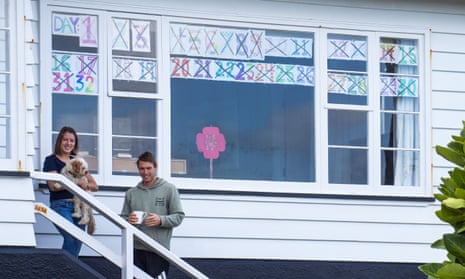New Zealand’s prime minister, Jacinda Ardern, has said the country has stopped the “widespread, undetected community transmission” of Covid-19, as tough lockdown restrictions are scheduled to ease on Monday night.
Ardern said New Zealand had “avoided the worst” in the pandemic, but must continue to fight the virus.
“There is no widespread undetected community transmission in New Zealand. We have won that battle. But we must remain vigilant if we are to keep it that way,” she said.
At 11.59pm on Monday, New Zealand will lift its level-4 lockdown which has been in place for more than four weeks. During that time, almost all businesses have been closed, along with schools while the population has been asked to remain in their homes for all but supermarket visits and short walks.
Ardern said there was no way of knowing what may have happened without the level-4 lockdown.
But she warned that in level-3 there were new risks – namely people coming into more contact with others.
Level 3 will see retailers, restaurants and schools allowed to reopen on a smaller scale. Schools will reopen on Wednesday for children up to Year 10 who cannot study from home, or whose parents need to return to work.
Workers will also be able to resume on-site work, provided they have a Covid-19 control plan in place, with appropriate health and safety and physical distancing measures. It is expected one million New Zealanders will return to work on Tuesday.
However, Ardern warned the public of bringing too many people into expanded family “bubbles”.
“We are opening up the economy, but we’re not opening up people’s social lives,” Ardern said.
The director general of health, Ashley Bloomfield, said that the transmission of the virus had been “eliminated”. This did not mean zero cases, but that health officials knew where all new cases were coming from.
Ardern was also optimistic – asked if New Zealand had eliminated Covid-19, she replied “currently”.
New Zealand’s transmission rate – the number of people each infected person can pass the virus to – was now under 0.4, compared to the average overseas transmission rate of 2.5.
Bloomfield said Covid-19 was a “tricky virus” and New Zealanders needed to remain vigilant. He reported one more Covid-19 related death on Monday. The nation’s 19th victim was a woman in her 90s. There was one new confirmed case and four probably cases, he said.
Ardern said the country would remain at level 3 for two weeks before cabinet decided on whether to move to level 2.
“We can only do this if we continue to pull together. If we need to stay at level 3 [for longer] we will.”
She also said she was hopeful that New Zealand and Australia might be able to create a trans-Tasman bubble at some time in the future, possibly allowing travel between the two countries, but the focus was making sure both countries were domestically managing the virus.
Despite the optimistic numbers, both Bloomfield and Ardern warned against complacency.
“To succeed we must hunt down the last few cases of the virus,” said Ardern. “This is like looking for a needle in a haystack.”
To that end, a contact tracing app for Covid-19 would also be available in the next fortnight, however, Ardern said that had limitations.
